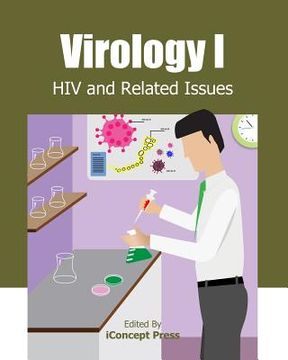Compartir
Virology I: HIV and Related Issues (en Inglés)
Iconcept Press
(Autor)
·
Createspace Independent Publishing Platform
· Tapa Blanda
Virology I: HIV and Related Issues (en Inglés) - Press, Iconcept
$ 69.350
$ 138.690
Ahorras: $ 69.340
Elige la lista en la que quieres agregar tu producto o crea una nueva lista
✓ Producto agregado correctamente a la lista de deseos.
Ir a Mis Listas
Origen: Estados Unidos
(Costos de importación incluídos en el precio)
Se enviará desde nuestra bodega entre el
Viernes 09 de Agosto y el
Miércoles 21 de Agosto.
Lo recibirás en cualquier lugar de Chile entre 1 y 3 días hábiles luego del envío.
Reseña del libro "Virology I: HIV and Related Issues (en Inglés)"
A virus is a small infectious agent that replicates within living cells of organisms. Viruses infect all types of organisms, from animals and plants to bacteria and archaea. Today, around 5,000 viruses have been reported in detail, although there are potentially millions. Viruses are found in almost every ecosystem on Earth and are the most abundant type of biological entity. The study of viruses is known as virology, a sub-speciality of microbiology. Virology has two volumes. Volume 1 mainly discusses the latest research related to Human Immunodeficiency Virus (HIV). Chapter 1 explores HIV epidemics throughout the world, examining transitions from injected related transmission to heterosexual transmission of the HIV virus. The authors explain factors that influence the transitions in countries with high prevalence HIV infection among their injecting drug use populations. Chapter 2 discusses the association between HIV and Hodgkin lymphoma (HL). In the current post-combination antiretroviral therapy era, HL ranks among the most frequent non-AIDS defining cancers (NADCs) and is an emerging and challenging entity in sub-Saharan Africa. Chapter 3 seeks to outline some PMTCT and child survival issues pertinent to resource limited settings that are to be considered in achieving the WHO strategic plan of reduction of pediatric HIV infection by 2015. Chapter 4 reviews the morphological, physiological and behavioral changes observed in corn earworm moths, (Helicoverpa zea) infected with the sexually transmitted, sterilizing virus HzNV-2. These pathological effects as well as viral persistence and genes responsible for these features of the virus are presented along with the potential HzNV-2 holds for use in controlling this agriculturally important insect pest. Chapter 5 describes the main features of lentivirus derived vectors and the results obtained in the transduction of the airway epithelium in in vitro and in vivo models as well as their usefulness in the stem cells field. The primary focus of this chapter is on the main applications of lentiviral vectors relative to the gene therapy of respiratory diseases. Chapter 6 characterizes the anti-HIV-1 response by looking at the ability of IFNbeta-induced genes to restrict HIV-1 particle production. The authors identified a potential novel HIV-1 restriction factor called HECT and RLD domain containing E3 ubiquitin protein ligase 5 (HERC5) that targets a unique late stage of HIV-1 replication. Chapter 7 summarizes seminal findings that have revealed dual implication of the RNAi machinery in virus biology and discusses their implications for cell biology. In Chapter 8, a novel RNA-based immune system against viruses is being established, which has emerged as a fundamental regulator of potent antiviral defense system. The mechanism for Dicer pathway is presented, which would be a future goal for many virus research scientists. Chapter 9 proposes an overview of the genetic diversity of Epstein-Baar virus Latent Membrane Protein 1 (LMP1) and provides a new classification system of LMP1 variants based on selected polymorphisms and functional features. Chapter 10 reviews our current knowledge of the effect of pathogen infection on thymic physiology.
- 0% (0)
- 0% (0)
- 0% (0)
- 0% (0)
- 0% (0)
Todos los libros de nuestro catálogo son Originales.
El libro está escrito en Inglés.
La encuadernación de esta edición es Tapa Blanda.
✓ Producto agregado correctamente al carro, Ir a Pagar.

